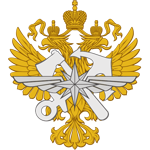UDK: 347.44
Sergey Iv. Leonov - deputy head of the transport security department of the Federal Agency of Railway Transportation (Roszheldor), s.leonov@roszeldor.ru
Abstract. Currently the issues of transport security have been firmly listed among the most relevant and widely discussed topics in the professional transport community. The systematic work of the authorities over the past 10 years to develop legislation in the field of transport security on the one hand, and the economic activity of transport infrastructure owners to protect such facilities from unlawful interference according to the Federal Law of February 9 2007 No. 16-ФЗ "On Transport Security" on the other hand, created a large-scale and specific market for goods, jobs and services in this area. The paper is devoted to the study of the opportunity to use an option contract in the economic activities of transport security subunits and certifying organizations to plan business activities and to prepare favorable conditions for certification of transport security units.
Статья целиком → Transport Law and Security
Transport Law and Security